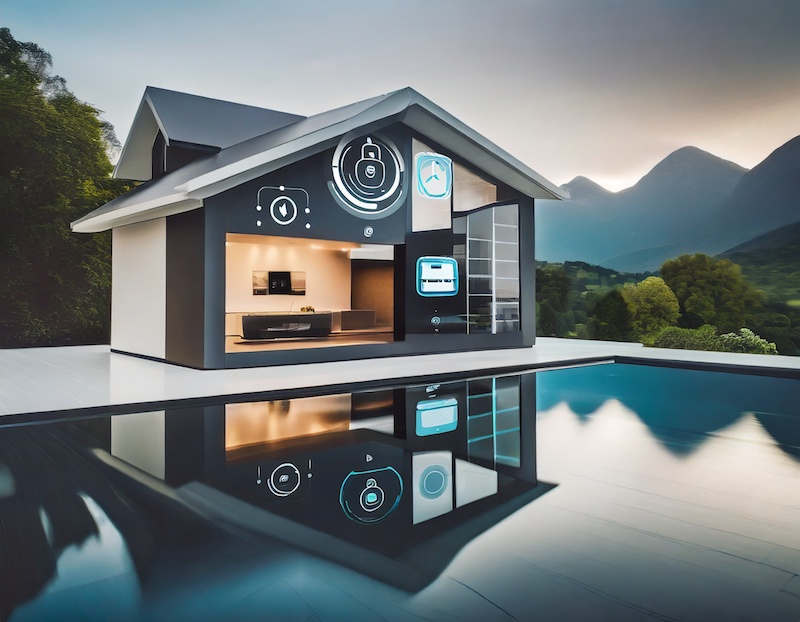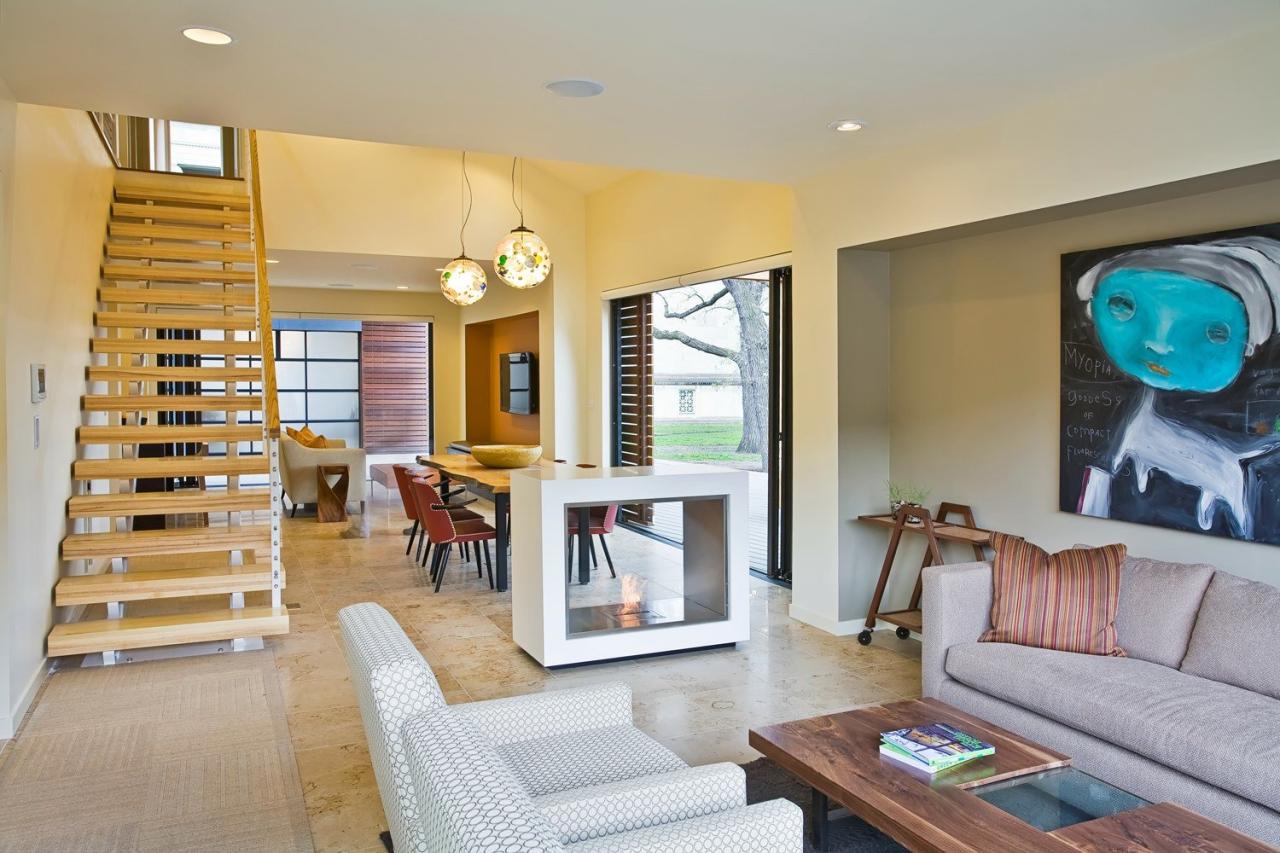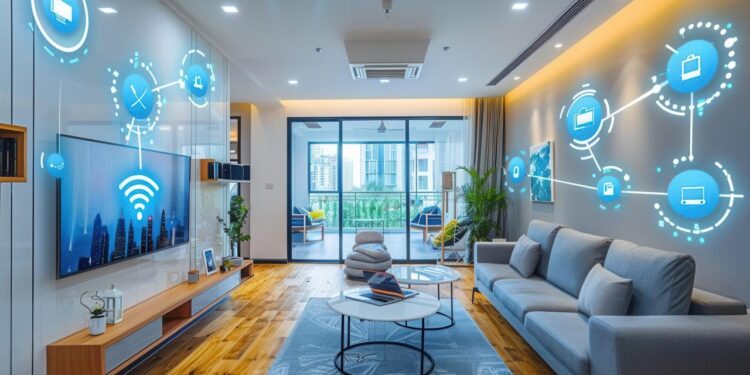The concept of a connected dwelling, once a distant dream of science fiction, has now firmly rooted itself in reality. The smart home design boom is not merely a passing trend; it represents a profound transformation in how we interact with our living spaces, driven by a desire for enhanced convenience, energy efficiency, elevated security, and personalized comfort. From intelligent thermostats that learn our preferences to lighting systems that adapt to our mood, technology is seamlessly weaving itself into the very fabric of our homes. This comprehensive article delves into the multifaceted aspects of this booming phenomenon, exploring its historical genesis, the core technologies powering its rapid expansion, and its diverse manifestations across various elements of modern domestic life. We’ll uncover how designers, innovators, and homeowners are collaboratively shaping an intelligent aesthetic that is both deeply functional and elegantly integrated.
The Smart Home’s Ascent

The journey of the smart home, from a theoretical concept to a widespread reality, is a testament to technological progress and evolving consumer demands.
A. Early Automation Experiments (Mid-20th Century): The seeds of smart home technology were sown with rudimentary automation efforts. The “Electronic House” at the 1939 World’s Fair hinted at future possibilities, while early appliances like automatic dishwashers and remote-controlled televisions provided initial steps towards automated convenience. However, these devices largely operated in isolation.
B. The Dawn of Home Automation (1970s-1980s): The 1970s saw the emergence of more integrated home automation systems, albeit expensive and complex. Protocols like X10 allowed devices to communicate over existing electrical wiring. These systems primarily focused on basic functions like lighting control and security, often requiring professional installation and appealing mainly to tech enthusiasts.
C. The Internet’s Catalyst (1990s-Early 2000s): The rise of the internet provided a crucial backbone for remote connectivity. Early smart home devices could be accessed and controlled via dial-up or broadband. However, proprietary systems and a lack of interoperability remained significant hurdles, creating a fragmented market.
D. Smartphone Revolution and Cloud Computing (2000s-2010s): The widespread adoption of smartphones transformed the smart home landscape. Smartphones became intuitive control hubs, while cloud computing enabled remote access, data analysis, and the integration of diverse devices. Companies like Nest (thermostats), Philips Hue (lighting), and Ring (video doorbells) emerged, making smart home technology more user-friendly and accessible to the mass market.
E. Artificial Intelligence and Voice Control (2010s-Present): The integration of Artificial Intelligence (AI) and Machine Learning (ML), particularly through voice assistants like Amazon Alexa, Google Assistant, and Apple Siri, has been the primary driver of the current boom. AI allows systems to learn user habits, anticipate needs, and respond to natural language commands, making smart homes truly “intelligent” and less reliant on manual input.
This historical trajectory reveals a gradual but accelerating progression, culminating in the integrated, intelligent, and intuitive smart home designs that are booming today.
The Intelligent Ecosystem
The contemporary smart home operates as a sophisticated ecosystem, seamlessly orchestrating various technologies to deliver convenience, efficiency, and enhanced living.
I. Connectivity Protocols
Reliable and efficient communication between devices is the bedrock of any smart home.
A. Wi-Fi: The most common wireless networking standard, Wi-Fi connects many smart devices (especially those requiring high bandwidth like cameras and streaming devices) to the home network and the internet. Innovations like Wi-Fi 6 and Wi-Fi 7 offer faster speeds and better performance in congested environments.
B. Bluetooth Low Energy (BLE): Ideal for short-range communication and battery-powered sensors, BLE is energy-efficient and often used for device setup or direct control between a phone and a single smart device.
C. Zigbee and Z-Wave: These are mesh networking protocols specifically designed for smart home devices like lights, locks, and sensors. They create a robust network where devices relay signals to each other, extending range and consuming less power than Wi-Fi, making them highly reliable for critical functions.
D. Thread: A newer, IP-based mesh networking protocol built for low-power IoT devices. Supported by major tech companies, Thread emphasizes security and interoperability, aiming to simplify the smart home landscape and facilitate seamless device communication.
E. Matter: Not a new connectivity protocol, but a universal application layer standard designed to unify smart home devices across different ecosystems (e.g., Apple HomeKit, Google Home, Amazon Alexa). Matter aims to solve interoperability issues, making it easier for devices from different brands to work together.
F. Ethernet (Wired): While wireless dominates, wired Ethernet provides unparalleled speed, security, and stability for central smart home hubs, media servers, and other bandwidth-intensive components, minimizing latency and maximizing reliability.
The judicious combination of these protocols ensures that all smart devices can communicate effectively and reliably, creating a cohesive and responsive intelligent environment.
II. Artificial Intelligence (AI) and Machine Learning (ML)
AI and ML are the intelligence behind the smart home boom, transforming simple automation into proactive and personalized living experiences.
A. Behavioral Learning and Prediction: AI algorithms analyze user habits (e.g., preferred lighting levels at certain times, temperature settings, media consumption patterns) and proactively adjust systems to match those preferences, anticipating needs rather than just reacting to commands.
B. Natural Language Processing (NLP): Powering voice assistants (e.g., Alexa, Google Assistant, Siri), NLP enables natural, conversational interaction with smart home devices. Users can issue complex commands and ask questions, making control effortless.
C. Contextual Awareness: ML allows systems to understand the current context – whether occupants are home or away (geofencing), the time of day, external weather conditions, even the occupancy of individual rooms – to make intelligent, adaptive decisions.
D. Personalized Experiences: AI customizes entertainment suggestions, news updates, lighting scenes, and even climate zones based on individual user profiles and past interactions, creating a highly personalized living environment tailored to each occupant.
E. Anomaly Detection and Security: AI analyzes patterns from security cameras, motion sensors, and door/window contacts to differentiate between normal activity and potential threats, significantly reducing false alarms and enhancing peace of mind.
F. Energy Optimization: ML algorithms can optimize energy consumption by predicting energy demand, leveraging renewable sources, and dynamically adjusting heating/cooling based on real-time data and forecasts, leading to significant savings.
AI makes the smart home truly “smart,” transforming it into a responsive, intuitive, and proactive partner in daily life.
III. Sensors and Actuators
Sensors are the eyes and ears of the smart home, gathering data, while actuators are the muscles, executing commands.
A. Motion Sensors: Detect movement to trigger actions like turning on lights, activating security cameras, or adjusting climate control when a room is occupied.
B. Contact Sensors: Monitor the open/closed status of doors, windows, cabinets, and garages, crucial for security alerts or automation rules (e.g., turning off the AC if a window is left open).
C. Temperature and Humidity Sensors: Provide crucial data for intelligent climate control systems, optimizing comfort, preventing mold, and improving energy efficiency.
D. Ambient Light Sensors: Detect natural light levels, allowing smart lighting and automated blinds to adjust automatically, optimizing illumination and saving energy.
E. Environmental Sensors: Crucial for health, these detect indoor air quality (VOCs), carbon monoxide (CO), smoke, and even particulate matter, alerting residents to potential hazards.
F. Water Leak Sensors: Placed in kitchens, bathrooms, or basements, these detect leaks early, preventing costly water damage.
G. Actuators (Smart Switches, Motors, Valves): These are the components that physically carry out commands – smart light switches turning lights on/off, motorized blinds opening/closing, smart valves controlling water flow, or smart locks securing doors.
The seamless integration of these sensors and actuators, governed by intelligent AI, creates the responsive and automated nature of a booming smart home.
Smart Home Design’s Broad Impact on Living

The smart home boom is fundamentally reshaping every facet of domestic life, offering unparalleled levels of convenience, efficiency, and comfort.
I. Elevated Comfort and Ambiance
Smart home design prioritizes creating environments that perfectly adapt to human needs and moods.
A. Personalized Climate Control: Smart thermostats learn preferences, pre-heat/cool spaces before arrival, and manage individual zones, ensuring optimal comfort while reducing energy waste.
B. Dynamic Lighting: Lights can adjust brightness, color temperature (from warm to cool white), and even hue to match the time of day, activity (e.g., reading, relaxing, working), or personal mood. Automated dimming and scene setting are commonplace.
C. Smart Shading: Motorized blinds and curtains automatically adjust based on sunlight, privacy needs, or scheduled times, optimizing natural light, reducing glare, and enhancing energy efficiency.
D. Multi-Room Audio and Visuals: Seamless streaming of music and video to different rooms, controlled by voice or touch, creating a cohesive entertainment experience throughout the home. Smart TVs with integrated streaming services and voice control are standard.
E. Scent and Air Quality Management: Smart diffusers can release calming or invigorating scents, while integrated air purifiers and humidifiers monitor and adjust air quality for optimal health and comfort.
Smart homes transform living spaces into dynamic, adaptive cocoons of comfort.
II. Enhanced Security and Peace of Mind
Modern smart home design integrates advanced security features, offering robust protection and constant vigilance.
A. Smart Locks and Keyless Entry: Control access remotely, grant temporary passcodes, and receive notifications when doors are locked or unlocked. Biometric locks (fingerprint, facial recognition) add another layer of security.
B. Video Doorbells and Outdoor Cameras: See, hear, and speak to visitors from anywhere, receive motion-activated alerts, and record footage, acting as a virtual gatekeeper. AI-powered cameras can differentiate between people, packages, and pets.
C. Integrated Alarm Systems: Sensors on doors, windows, and motion detectors communicate with a central hub, triggering alarms and sending alerts to homeowners or professional monitoring services.
D. Environmental Hazard Detection: Smart smoke, carbon monoxide, and water leak detectors immediately alert residents and can even trigger automatic shut-offs (e.g., smart water valves) to prevent major damage.
E. Remote Monitoring and Control: Homeowners can monitor their property via live video feeds, arm/disarm systems, and check device statuses from anywhere in the world using a smartphone app.
Smart security provides layers of protection, offering unparalleled peace of mind.
III. Optimized Energy Efficiency and Sustainability
The smart home boom is intrinsically linked to a growing emphasis on environmental responsibility and reducing utility costs.
A. Automated Energy Management: Smart thermostats, lighting, and appliance controls work in concert to minimize energy consumption by adjusting usage based on occupancy, schedules, and real-time energy prices.
B. Solar and Battery Integration: Smart home systems can prioritize using renewable energy from solar panels, store excess energy in home batteries, and even intelligently discharge power back to the grid when rates are high.
C. Appliance Optimization: Smart washing machines, dryers, and dishwashers can be programmed to run during off-peak energy hours or when renewable energy generation is highest.
D. Water Conservation: Smart irrigation systems adjust watering schedules based on weather forecasts, soil moisture, and plant needs. Leak detection systems prevent water waste from undetected drips.
E. Personalized Usage Reports: Smart systems provide detailed insights into energy and water consumption, empowering homeowners to identify areas for improvement and track savings.
Smart homes play a crucial role in fostering sustainable living by making energy and resource management intelligent and effortless.
IV. Streamlined Routines and Productivity
Smart home design is about simplifying daily tasks and freeing up time for what truly matters.
A. Voice Control of Everything: Control lights, media, thermostats, appliances, and even order groceries using simple voice commands, making hands-free operation possible.
B. Scene Automation: Create custom “scenes” that trigger multiple actions simultaneously (e.g., “Good Morning” scene turns on lights, opens blinds, starts coffee, plays news).
C. Smart Appliance Convenience: Remotely preheat ovens, start dishwashers, or check fridge contents, simplifying meal preparation and household chores.
D. Intelligent Cleaning: Robotic vacuums and mops can be scheduled or voice-activated to keep floors clean, reducing manual effort.
E. Package Delivery Management: Smart doorbells and locks can facilitate secure package delivery, even when no one is home.
F. Virtual Assistants for Information: Get instant answers to questions, manage calendars, set reminders, and access a wealth of information directly through smart speakers or screens.
Smart home design takes the drudgery out of daily routines, creating more efficient and enjoyable living.
The Aesthetics of Intelligence
As smart homes boom, the design challenge is to integrate technology so seamlessly that it enhances the living experience without becoming an intrusive eyesore. This has led to a distinct aesthetic.
A. Minimalism and Discretion: The prevailing aesthetic favors clean lines, uncluttered spaces, and technology that blends into the background. Devices are often designed to be sleek, compact, and aesthetically neutral, or even hidden from view.
B. Smart Furniture and Integrated Solutions: Furniture with built-in charging pads, hidden speakers, touch-sensitive surfaces, or motorized components allows technology to disappear within the design. Walls, ceilings, and floors become canvases for embedded tech.
C. Intuitive Interfaces: The best smart home designs prioritize user experience through simple, intuitive control interfaces, whether on a central touchscreen panel, a smartphone app, or through voice commands. The technology should be felt, not necessarily seen.
D. Material Harmony: Smart devices are increasingly being designed with materials (e.g., fabric, wood, matte plastics, brushed metals) that complement interior decor rather than standing out as purely utilitarian gadgets.
E. Lighting as Design Element: Smart lighting, with its ability to change color, intensity, and even project patterns, becomes a powerful tool for shaping the mood and highlighting architectural features, moving beyond mere illumination to active design.
F. Cable Management: Obsessive attention to hiding cables and wires is key to maintaining a clean, sophisticated smart home aesthetic.
The aesthetic of the smart home boom is one of subtle sophistication, where technology intelligently enhances the environment without overtly dominating its visual landscape.
Challenges and The Future Trajectory of Smart Home Design
Despite its rapid growth, the smart home boom faces challenges that will shape its future trajectory.
A. Interoperability and Fragmentation: The lack of universal standards among different brands and ecosystems (e.g., Google Home, Apple HomeKit, Amazon Alexa) can lead to compatibility issues. The Matter protocol aims to be a significant solution here.
B. Privacy and Data Security: The vast amount of data collected by smart devices (e.g., routines, conversations, movements) raises significant privacy concerns. Robust encryption, transparent data policies, and user control over data are paramount for continued trust.
C. Complexity of Setup and Maintenance: While improving, setting up and maintaining a complex smart home system can still be daunting for the average consumer, requiring more intuitive onboarding and self-healing systems.
D. Cost and Affordability: While basic smart devices are increasingly affordable, a fully integrated, high-end smart home still represents a significant investment, potentially widening the digital divide.
E. Dependence on Connectivity: Smart homes are highly reliant on stable internet and power. Outages can render many smart features inoperable, highlighting the need for local processing and backup power.
F. User Adoption and Learning Curve: Not all consumers are equally enthusiastic about or comfortable with advanced automation, necessitating designs that offer a range of integration levels and intuitive user interfaces.
The future of smart home design promises even deeper levels of integration, intelligence, and personalization.
G. Ambient Computing and Invisible Interfaces: Technology will become increasingly imperceptible, embedded seamlessly into surfaces and objects, responding proactively to needs without explicit commands. The home will intuitively adapt to its occupants.
H. Predictive and Proactive Living: AI will evolve to predict needs with greater accuracy, anticipating user desires before they are even conscious of them, leading to truly effortless and anticipatory living.
Conclusion
The smart home design boom is far from over. It is a continuous journey towards creating living spaces that are not just structures, but intelligent, adaptive, and deeply personal partners in our daily lives, promising a future of unprecedented comfort, efficiency, and well-being.





Discussion about this post